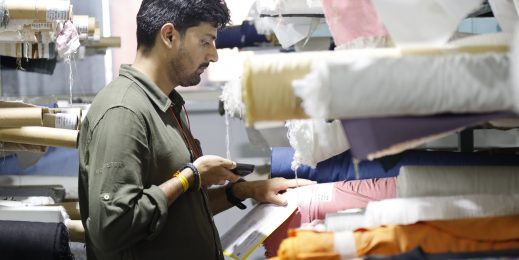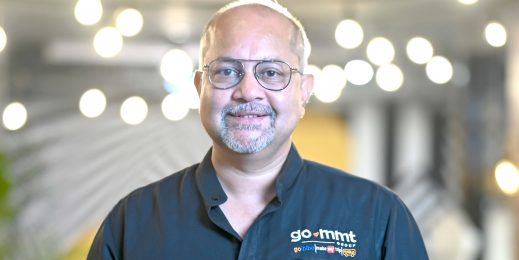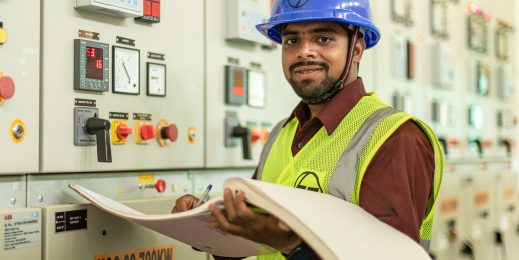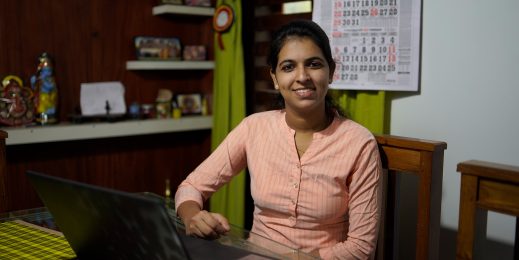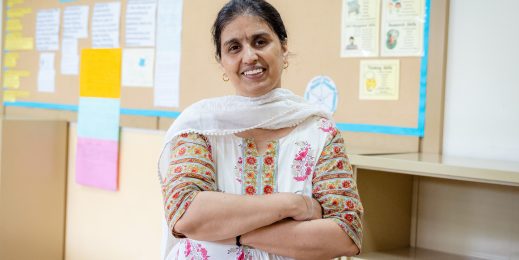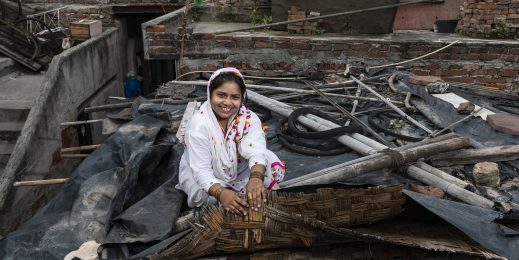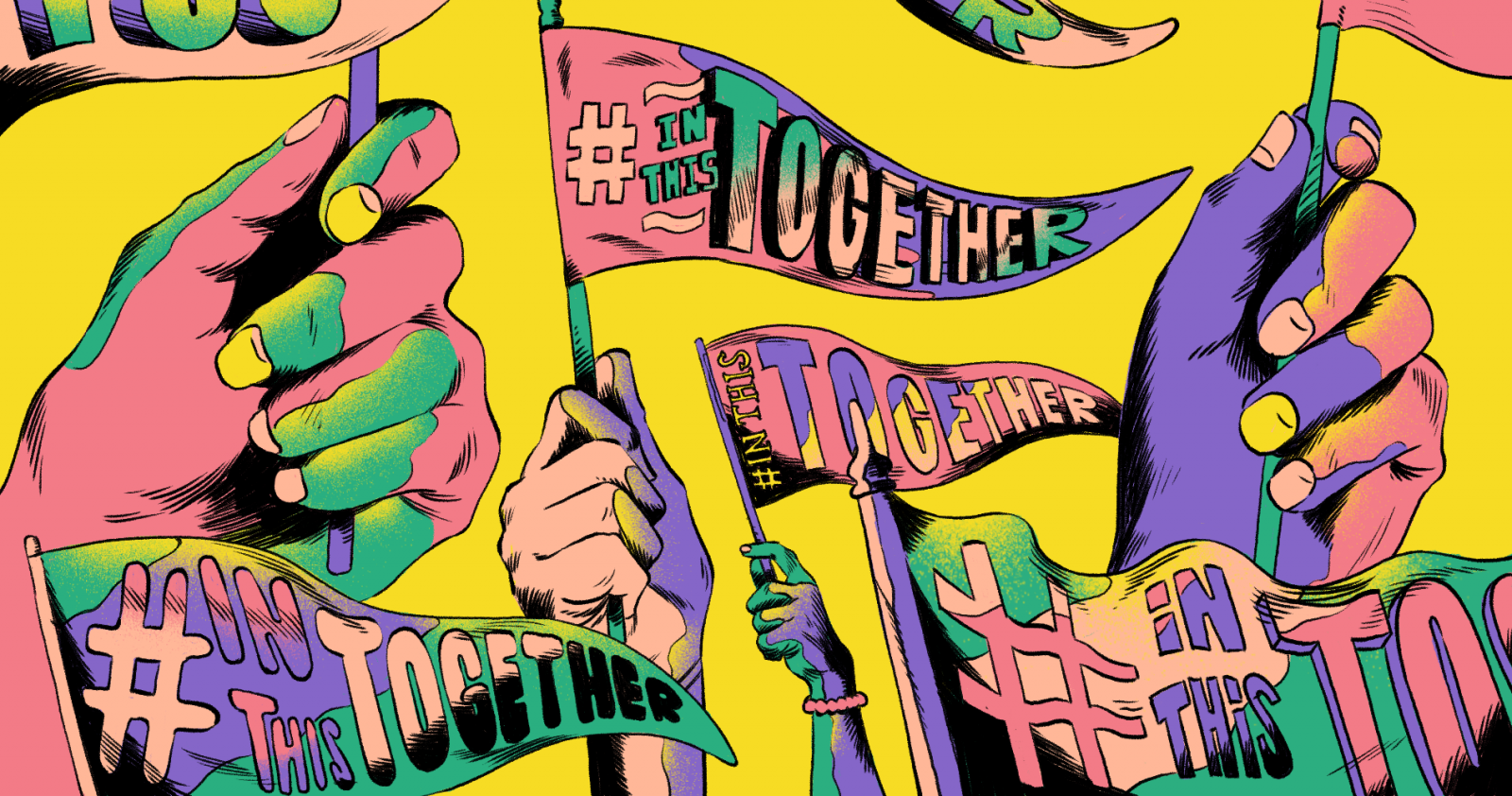
#InThisTogether: How Microsoft employees in India rallied to save lives during the pandemic
An ambulance rushes a COVID-positive patient from one hospital to another in search of a bed. His blood oxygen level is critically low and the cylinder keeping him alive is emptying fast.
His son, a Microsoft employee, is on board with him and sends out an SOS for a replacement cylinder.
A volunteer team of Microsoft co-workers whirs into action. One starts searching for hospital beds. Another calls a list of oxygen cylinder suppliers. Yet another hits the road and goes to suppliers directly. After trying three, he manages to get a full cylinder and rushes through traffic to meet the ambulance.
He hands it over to the son in the nick of time only to realize that neither had accounted for the valve that connects the cylinder to the face mask. Different makes often have incompatible valves and as the son starts hooking his father to the new cylinder, there is a moment of anxiety: Will the valve fit?
Thankfully, it does. They eventually find a hospital bed, too. A life is saved. And a new friendship is struck up: Before meeting in the back of the ambulance that day, the two Microsoft employees had been complete strangers.
India had been struggling with a second wave of COVID-19 since early April. Its severity had left many families clutching at straws. Too often they had been relying on good luck and goodwill of others to find hospital beds, oxygen cylinders and concentrators, life-saving drugs, and other essentials. Against this challenge, more than 850 Microsoft employees banded together to help colleagues and their loved ones impacted by the pandemic.
Microsoft Stories India has spoken to over a dozen of these volunteers. Here are some of the ways they dealt with an unfolding crisis by bringing together technological expertise and organization know-how with comradeship and selflessness.
The second wave hits hard
For more than a year, Microsoft India’s Crisis Management Team (CMT) ensured the safety of its employees and smooth running of the organization through the first wave of the pandemic and the national lockdown that followed.
The first wave came with its challenges—like gearing up the company’s operations for work and engage remotely, and getting deeper into business contingency plans in case of unforeseen incidents.
But when the second wave struck in April this year, the CMT members quickly realized it was far more intense. Many more employees and their families were being impacted by COVID-19.
“The focus for us has always been the health and safety of our employees,” says Rekha Talluri, chief financial officer and the CMT lead for Microsoft India. “With the second wave, it was all about how we could help our employees and their families during this crisis.”
The company mobilized multiple resources to support employees and their dependents. These included 24×7 tele-medicine helplines, hospital-assisted quarantine support, vaccination assistance, and enabled testing, ambulance support, oxygen concentrators, health insurance support and food delivery for those affected by COVID-19.
“Our endeavor has been to provide support and care for our colleagues during these unprecedented times and I am deeply humbled and inspired to see how so many members of the Microsoft family came together to support their colleagues across Microsoft India,” says Ira Gupta, head of human resources, Microsoft India.
India had been struggling with a second wave of COVID-19 since early April. Its severity had left many families clutching at straws. Too often they had been relying on good luck and goodwill of others to find hospital beds, oxygen cylinders and concentrators, life-saving drugs, and other essentials. Against this challenge, Microsoft employees banded together to help colleagues and their loved ones impacted by the pandemic.
For Aparna Gupta, customer success lead at Microsoft India, things got personal when one of her team members was found to be COVID positive and reached out for help when the second wave had just started hitting New Delhi.
“We were scrambling for an ambulance at 2 a.m. and the first ambulance that came didn’t have oxygen. The second one had an oxygen cylinder but there was no nurse. We spent hours trying to find a hospital bed for her. Her situation deteriorated very quickly. You read about these things in the papers, we realized how bad things were on ground,” Gupta says.
“Everyone was feeling anxious and helpless,” Irina Ghose, executive director of cloud solutions, Microsoft India, recalls.
In response, they initiated the setting up of local support groups composed of Microsoft employee volunteers. “Some of our senior leaders decided to get together, pool our resources, and start engaging at the ground level. Until then we were resolving issues individually. If someone approached us, we’d drop our work, get on a call, and address it. What we needed was an engine to be set up with urgency.”
“We saw that several of our colleagues were in dire need of help. There were some who were living alone or didn’t have a support system,” says Himani Agrawal, the chief of staff for Microsoft India.
At around this time, Agrawal lost an aunt and an uncle with whom she was close. On the morning of her aunt’s passing, she got a call for help from a colleague. “Knowing that the disease had taken someone close to me, made me want to fight back even more badly.”
But to do this in an organization that employs more than 13,000 people required more than just noble intent. “As the numbers increased, we asked ourselves what else could we do?” she adds.
“It started as a scrum,” recalls Mithun Sundar who’d joined Microsoft India as chief transformation officer barely a month before the second wave hit. “At first we were reacting more than being proactive.”
For most part, everyone’s initial response was to just roll up their sleeves and do it themselves. Then one weekend, as the situation started looking grim ahead, calling for far more and structured, focused, and co-ordinated.
The local support group identified centers of activity where the company has offices and a significant employee presence—Delhi and its neighboring cities (Delhi NCR), Hyderabad, Bengaluru, and Mumbai. They assigned team leads for each center, who knew each of these cities well and were well connected to source emergency resources there.
A ‘rest of India’ group was also created. It ensured that even those employees who had gone back to their homes, due to remote working, or those who had immediate family anywhere else in the country, could get access to the same level of help.
But as cases increased, it became apparent that more volunteers from within the company were needed; people who’d be willing to go beyond their call of duty and help out other colleagues. This was a tall order given the severity of the pandemic, but when the call for help went out in late April, more than 850 employees offered to volunteer almost immediately.
Some of the volunteers served as pillar leads for each city and would be responsible for a specific resource like oxygen cylinders, hospital beds, medicines, ambulances, or anything else. The others would help secure those resources from verified leads and serve as “buddies” to employees in need of help by staying in touch with them over group chats and ensure they have everything they need.
If an employee was looking for any resource, all they had to do was write to a city-specific email address for help.
While buddies were reserved to help employees and their immediate families, it was decided right at the beginning that the verified information about resources would be made available to all employees, irrespective of whom they were helping, say a friend, a domestic help, or an acquaintance so no one would be left behind.
As cases increased, it became apparent that more volunteers from within the company were needed; people who’d be willing to go beyond their call of duty and help out other colleagues. This was a tall order given the severity of the pandemic, but when the call for help went out in late April, more than 850 employees offered to volunteer almost immediately.
When technology meets empathy
During the first few days, managing data and keeping it relevant was the most time-consuming part of the process. While local municipalities in all the cities did have helplines, a lot of detail about resource availability was being gleaned from social media updates. This was mostly crowdsourced information and it needed to be validated.
“That was our first major challenge,” Ghose says. “Since resources like oxygen cylinders, life-saving drugs, and hospital beds were in short supply, the data that we were collecting was getting outdated very quickly. To ensure we were forwarding only the latest contact numbers to our colleagues in need, we would drop everything we were doing, make the calls ourselves and check the validity of the information we were getting.”
The second challenge was how to manage volunteers. In the initial days, everything was being managed on Excel sheets manually and there was no easy way to figure out whether someone was on the verge of burning out and needed to be given some time off or when more resources needed to be added in a particular city because of increased loads.
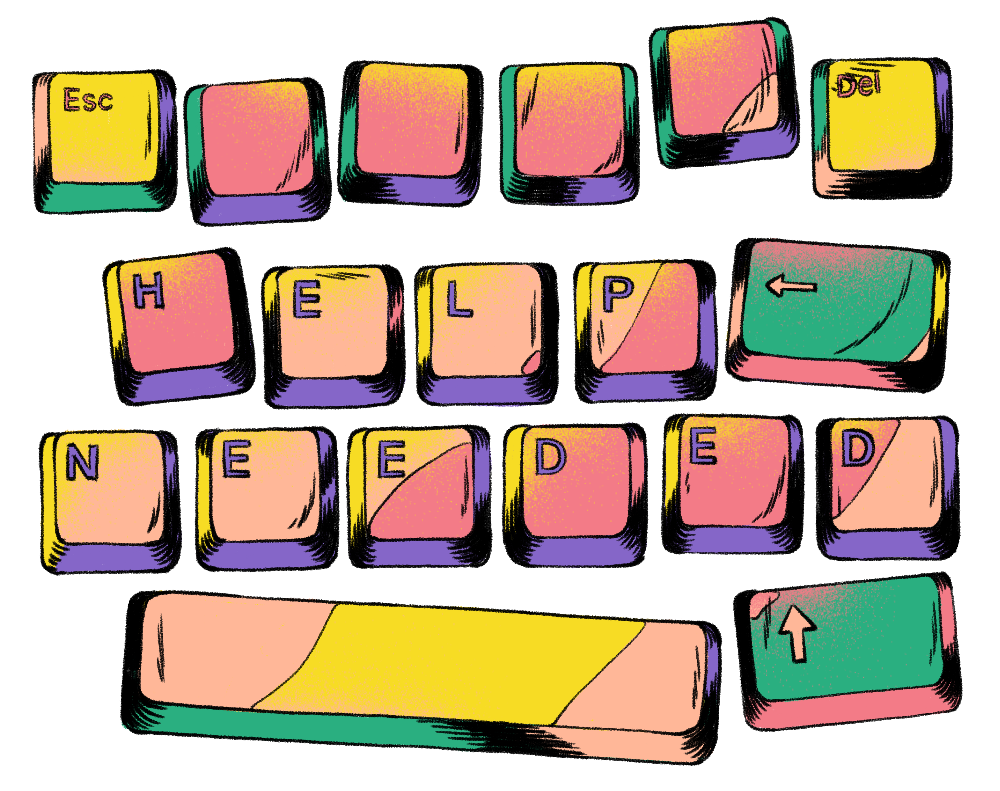
It became clear very quickly that this was not a sustainable system. So, the core team roped in specialists from across the company.
In her day job, Rashmi Datta Handa manages business engagement for Microsoft India that involves understanding the experiences of customers, partners, and users to improve experiences they have with Microsoft’s support ecosystem. Her expertise in triaging and setting up customer support processes came handy as she helped set up a shift system for volunteers to handle requests with efficiency and agility.
In much the same way as customer complaints are handled, she created systems that provided city leads with a bird’s eye view of what was happening on ground, as well as lists of requests that needed to be prioritized and any areas that needed to be beefed up.
“As more volunteers started joining us, we were able to create rosters to reduce the duration of the shifts to two hours. We also built redundancies to ensure that if the assigned volunteer was unable to take on a request, another would step in their place,” she recollects.
The process, though effective, still relied on volunteers having to make the calls to crowdsourced numbers and validate them before passing them on to their colleagues in need, which slowed down the process.
This is where Ajitabh Dwivedi, national manager—SMB Inside Sales, stepped in. Dwivedi runs a team of tele-callers who reach out to potential customers to identify opportunities, nurture relations, and bring them to closure with partners. He brought his expertise to the table and did what he would’ve done if he had to resolve a business issue.
He set up a small tele-calling operation that would contact crowdsourced leads and verify whether they had resources. A channel on Microsoft Teams was set up for volunteers where they could raise requests for the resources they needed. Tele-callers would keep replying to those messages as soon as they had verified leads.
The simplification of the process also made it scalable across all cities. The group realized they had to move beyond Excel sheets and see how the process could be automated.
It was decided right at the beginning that the verified information about resources would be made available to all employees, irrespective of whom they were helping, say a friend, a domestic help, or an acquaintance so no one would be left behind.
Sudhir Rao, director—partner technology, leads a team of technology strategists and architects that work with partners and customers to create new services and solutions. Using Microsoft Dynamics 365 and Power Platform, they created a portal that serves as an end-to-end triaging solution, much like what an air traffic controller would do to help airplanes fly and land safely. This is how it works.
An employee mails a request which gets reflected in the triage portal. The triage lead sees it, selects a few standard responses according to the request, and assigns two buddies by using a simple dropdown option. Only those employees who had volunteered to be buddies will show up in the dropdown and those with the least number of cases will show up on top, courtesy the roster system created by Handa.
The pillar leads can also see an email thread that provides a history of the case. The portal provides a separate dashboard for the buddy that displays details of the case that’s been assigned to them. They can get a view of how many cases there are from different regions, how many of these cases are critical, exactly what people are requesting and for whom among other details.
The solution also sends out automated mails. So, if you’re looking for COVID-19 testing centers in Mumbai, you will receive an email in a fixed format containing all the required information. This automated mail goes not just to the person who’s requested for it, but also the buddies assigned to them.
Tele-callers see the latest requests as well as the most up-to-date list of resources that they need to verify. This significantly improved the hit rate for both callers and buddies, who have had to make fewer calls to arrange for resources.
The solution also began powering a chatbot, where employees can ask for resources they need and get the latest verified leads without having to raise a request. However, all through this time the second wave was worsening. The “hit rate” — how often the information about resource leads was still relevant—started going down as resources quickly depleted. This meant volunteers spent more time calling leads that had often run out of resources. Now it wasn’t enough to have people on the ground but they had to figure out ways to ensure they had the most recent leads.
“The first couple of weeks, when the number of requests were high, were overwhelming and emotionally draining,” says Chintamani Padmanaban, director—partner technology consultant at Microsoft Customer Service & Support.
She leads a team of consultants spread across 18 countries and had seen through deadly waves of the pandemic as they hit China, Europe, and the US over the past year. “There were so many people asking for help, we didn’t have everything in place. There was this constant feeling of helplessness.”
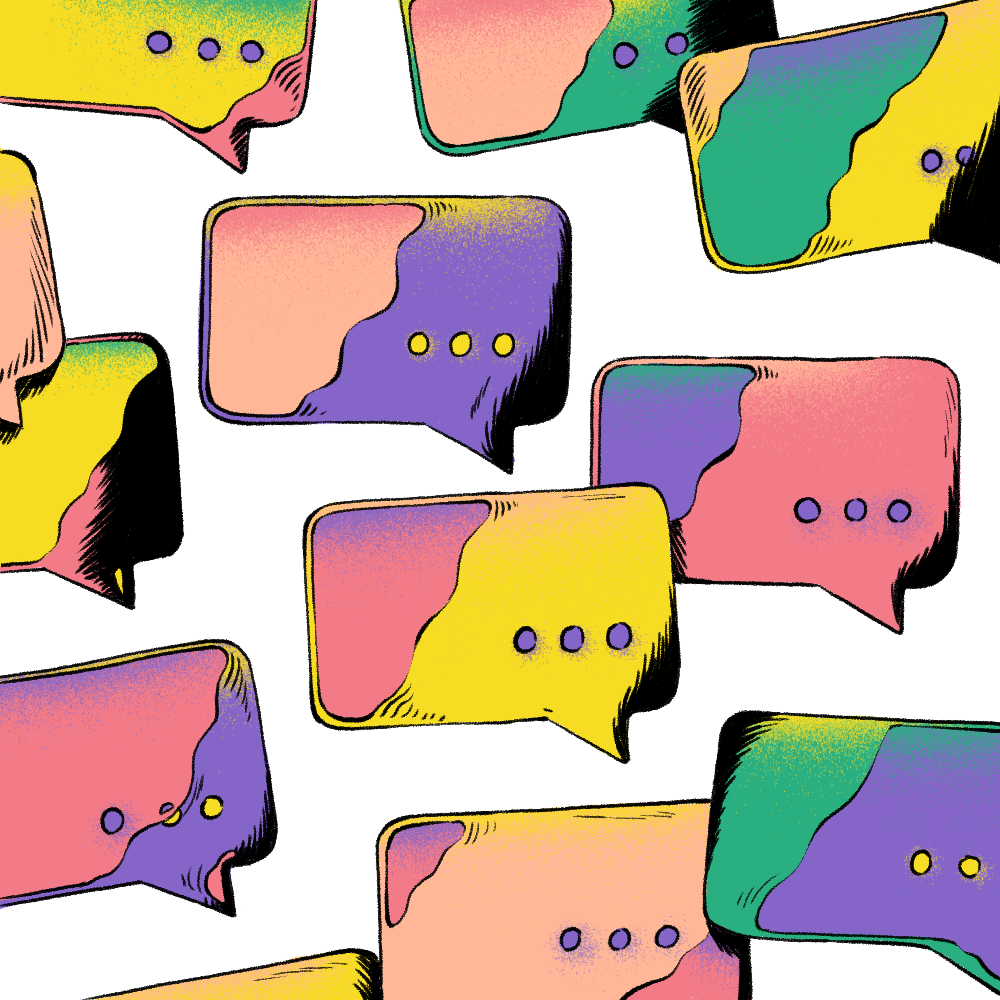
With this in mind, a team from Microsoft’s India Development Center began building out a solution that could automate the process of finding leads for resources to ensuring the tele-callers spend time calling the best leads out there.
“Before we were brought into the picture, people were sharing information from wherever they were getting it—be it their personal resources or from the web or social media,” says Sudhir Angara, senior director—group engineering manager, who leads the data and insights engineering organization.
Angara’s team had to surmount multiple challenges.
First, the data coming their way was unstructured and different formats: text, images, PDFs, spreadsheets, and even website links.
Second, there was no way to figure out how old the data was, or whether it had been shared already by someone else earlier.
“Time was super critical. We’d all heard or experienced cases where someone had shared a URL with a hospital’s contact details having 10 free beds. But by the time, someone reached out to the hospital, those beds were gone. With this solution we can process the data feed real-time and make the information available for people to consume within a matter of minutes. Every minute saved was equivalent to saving someone’s life during this wave,” he says proudly.
Angara’s team created their solution in less than two weeks. It gathered data from social media, email aliases where employees were sending requests, internal Teams groups that were created for the initiative, as well as other sources where employees were manually adding data. Using Azure Computer Vision and Azure Natural Language Processing (NLP), the solution would remove duplicate entries, arrange them according to recency, and make them ready for the tele-callers.
#InThisTogether
Many examples of the impact of all this collective effort have been recorded in Microsoft India’s own internal “Kudos Wall.”
It carries scores of details about how volunteers made a difference: how an oxygen concentrator was provided for someone’s husband in a remote location, how a badly needed injection was scheduled for a colleague’s sister, how a hospital bed was co-ordinated…
One recounts when seven members of his family, including an infant, tested positive, and how they got through the ordeal with the help of a buddy assigned to him. Another thanks the team for coordinating an ambulance at midnight. Yet another employee thanks their buddy for helping the children when both parents got admitted to a hospital.
“When the second wave hit, we really just asked ourselves what else we could do and how we could go beyond what is expected of us as colleagues and as a company. What you’re seeing today is a result of that,” says Ravi Verma Datla, services practice leader, Microsoft India Global Delivery, who led the efforts for his organization from Hyderabad.
“More than just helping people with hospital beds or a phone number for a resource, we also had to counsel people who were completely shattered and were calling us as a last resort. We had to show them that we understand and we’re in this together,” adds Anish Chandy, director—solution sales, who created and led the local support group in Bangalore.
An employee recounts how seven members of his family, including an infant, tested positive, and how they got through the ordeal with the help of a buddy assigned to him. Another thanks their buddy for helping their children when both parents got admitted to a hospital…
At the peak of the second wave, the volunteer teams were handling hundreds of requests every day and were regularly putting in 12 to 14-hour shifts, and predictably, this took its toll.
Himani Agrawal recollects, “I remember volunteers were breaking down so I would call 10-12 people every day and just hear them out. Sometimes just listening makes all the difference. There were times when I needed to vent too, and I had colleagues who would message or call me to check on me.”
Like many others, Agrawal also dialled in to Microsoft Cares, the company’s in-house counselling services to seek help and make sense of the losses around her.
While this initiative became a way to cope with losses for some, for others such as Ravi Birhman, chief of staff, Microsoft India Development Center, it helped see the world differently.
Birhman who was the city lead for Hyderabad, says: “For my entire career, I’ve worked in product teams where we have a specific approach to resolving problems. Over the last two months I’ve been exposed to a diverse set of people who have different styles of working and approaches to solving a problem. It’s helped me see the world from a different perspective and it’s been an altogether new experience.”
“During this period, it was heartening to see the strength and character of so many people that I’d known for many years,” adds Padmanaban.
“Looking back, the experience was overwhelming and humbling at the same time but most importantly, it was an example of how in the worst of times you see the best of humanity,” adds Gupta. “It started off as a very small group of volunteers who tried to make a difference at a city level, and it morphed into an initiative spread across multiple countries. We had volunteers from the US, Australia and elsewhere, everyone who just wanted to do something to help.”
For Rashmi Datta Handa, who set up the triaging process, being able to set an example for her 11-year-old daughter was the highlight.
“We were on a mission to ensure everyone comes back home safely. My daughter was seeing me work for hours, spending time away from her trying to save lives. One day she came to me and said she was proud of me. And that’s enough for me—to be able to set an example for her that whenever there’s a crisis, this is how you stand for people. This is an aspect of humanity I could teach her.”
But above all else, what this initiative did was reaffirm one’s faith.
Aneesh Dhawan, who has been leading Microsoft’s response to Covid in Delhi NCR says, “You’re often told that big cities have no heart, that they lack humanity. Times like these make you realize how untrue this is. Here we were doing everything we could for colleagues and people we hadn’t even met. We started as a small group to help whatever few people we could. Now, when we look around, we realize, we are no longer a small group.”
With additional reporting by Rajat Agrawal
Abhishek Mande Bhot is an independent writer and editor covering news, lifestyle, and luxury for publications in India and the US.







